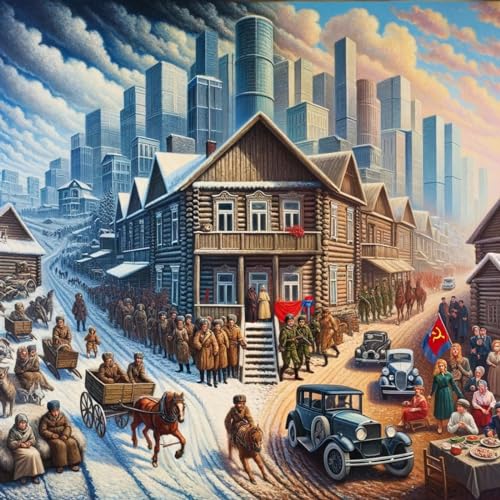This is your Russia 101, the easiest way to become an expert, well, at least knowledgable, on all things Russia.
So lets get started on our information journey, by explaining just how big a country we are talking about.
Russia, stretching across eleven time zones and being the largest country in the world by land area, has a history that is as vast and varied as its landscapes. But why is Russia's early history significant? Delving into the past, we journey from the rise of the Kievan Rus to the establishment of the Romanov dynasty, witnessing the ebb and flow of a nation's fortunes.
Ever wonder about the origins of the name 'Rus'? Scholars believe it might have come from the Old Norse term for the men who rowed – "rods-" given that the Vikings were pivotal in the early history of the state. It's a name that would come to define a vast expanse of land and a rich tapestry of history.
Kievan Rus 9th to 13th century:
The Kievan Rus was the cradle of the first Eastern Slavic state, making its mark between the 9th and 13th centuries. Legend has it that the Rurikid Dynasty, founded by the semi-legendary Norse prince Rurik, were the first to rule this fledgling state. It was under their leadership that the roots of Russian identity began to take shape.
A significant milestone was the introduction of Christianity. Vladimir the Great's conversion wasn't just a spiritual one but also a cultural and political turning point, aligning Kievan Rus closer to Byzantine than to the pagan past.
Witty Remark: If history were a teen drama, Kievan Rus would be that misunderstood protagonist trying to find its place in the chaotic world of adolescence, grappling with identity issues and peer pressure!
The Mongol Invasion and the Golden Horde (13th-15th century):
Imagine a vast, unstoppable force sweeping across continents. That was Genghis Khan's empire. As the Mongols invaded vast swathes of Eurasia, the Kievan Rus was not spared. The region fell under the yoke of the Golden Horde, marking a period known as the Tatar Yoke. The Mongols' influence was profound, shaping trade, politics, and even the Russian psyche.
Witty Aside: Had the Mongols been equipped with social media, their status updates would probably be the stuff of legends. "Just conquered another city, #MongolEmpire #Unstoppable."
The Rise of Muscovy:
Out of the ashes of Mongol dominance, Moscow emerged, not just as a city, but as a powerful principality. Ivan III, fondly referred to as "Ivan the Great", played a pivotal role in this. He was the one who challenged the Mongols, laying down the foundation for an independent Russian state. With his reign, the title 'Tsar', derived from 'Caesar', was adopted, symbolizing the ambition of Russian rulers to be seen as the heirs of the Roman and Byzantine empires.
The Time of Troubles (1598 to 1613):
In the wake of Ivan the Terrible's death, Russia plunged into a period of chaos, aptly named "The Time of Troubles". Boris Godunov's reign faced challenges, from famines to power struggles. This tumultuous era saw numerous pretenders trying to claim the throne, leading to great turmoil and unrest.
Yet, out of this reality-show-worthy chaos, the Romanov dynasty emerged, with Michael Romanov's election as Tsar in 1613, a reign that would last for over three centuries.
Picture the Time of Troubles as an intense reality TV show. There's backstabbing, unexpected twists, surprise contenders, and amidst all this drama, a new leading figure emerges to claim the prize.
In closing, the journey from Rus to Romanovs is a testament to Russia's resilience and adaptability. From humble beginnings to the rise of a dynasty, Russia's early history
Thank you for joining me on this wonderful trip through the history of Russia. Make sure you subscribe to never miss an update and so you will always be in the know.
Hear you next time. and until then, make sure you check out the other 101 series podcasts. Just search a country name and 101 on any podcast platform. We will come up.



